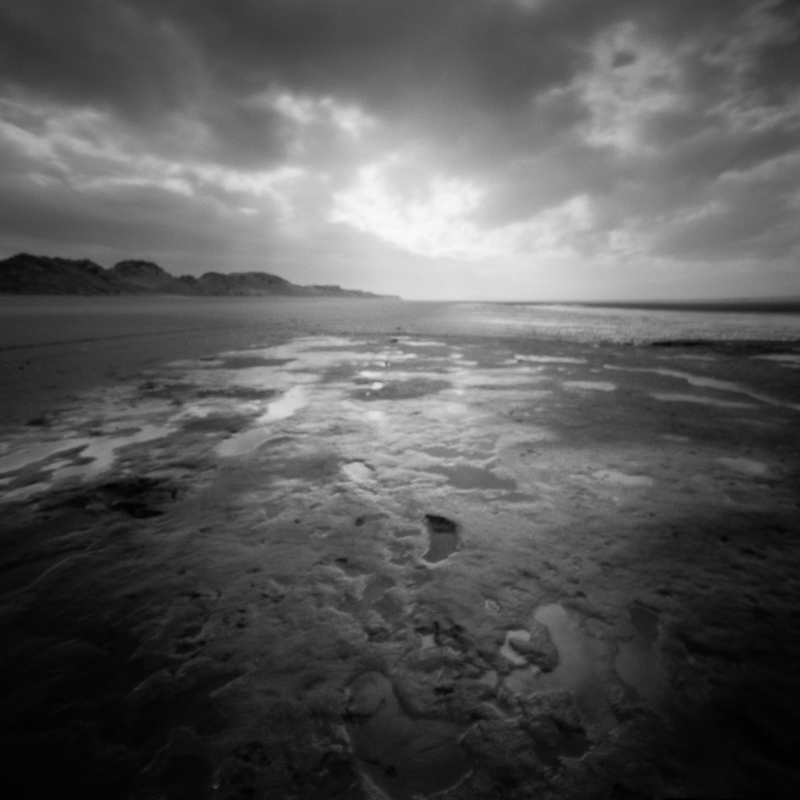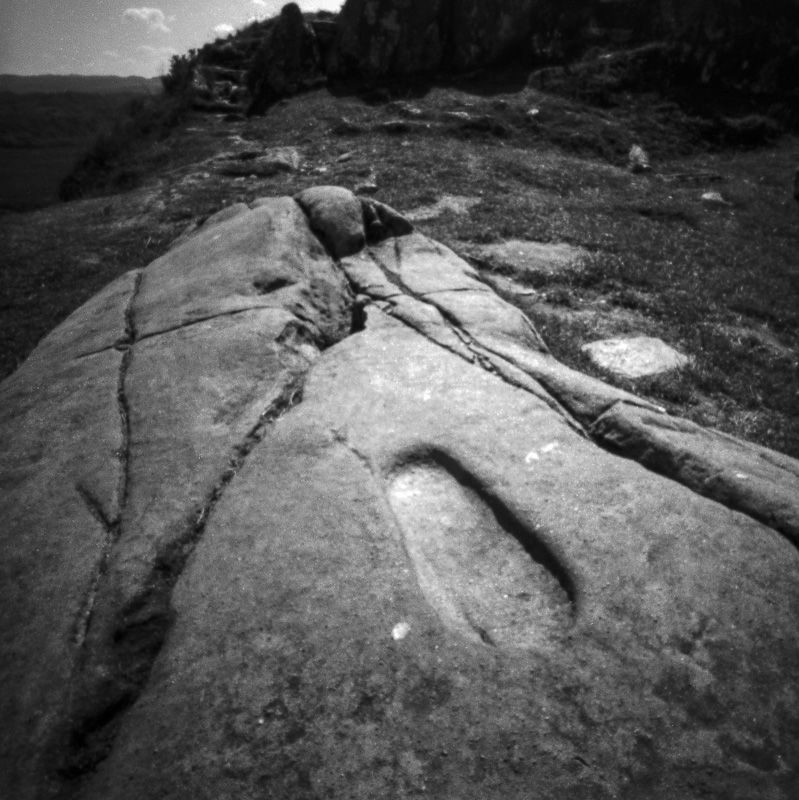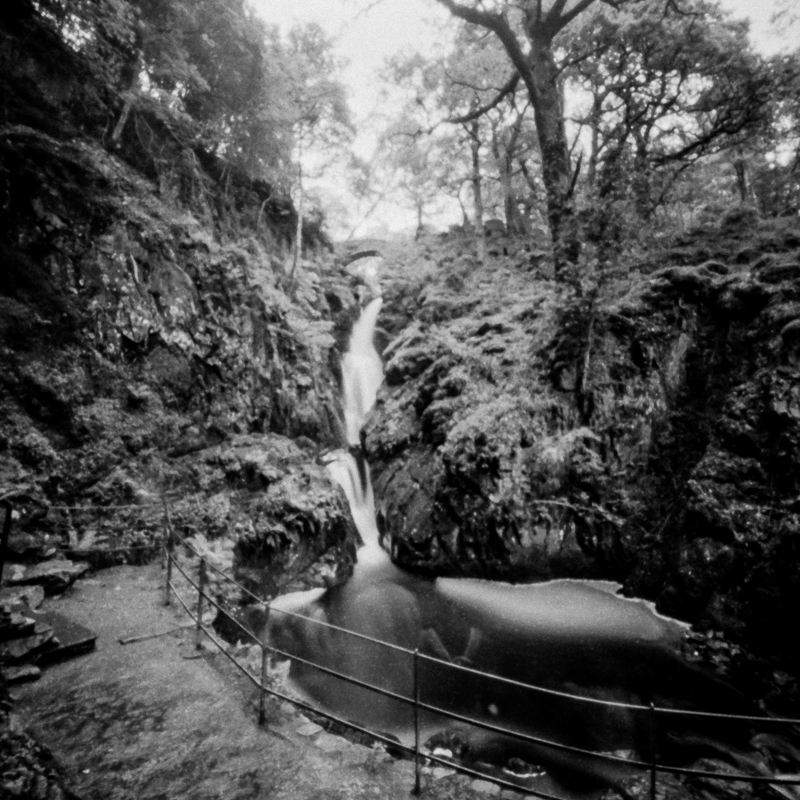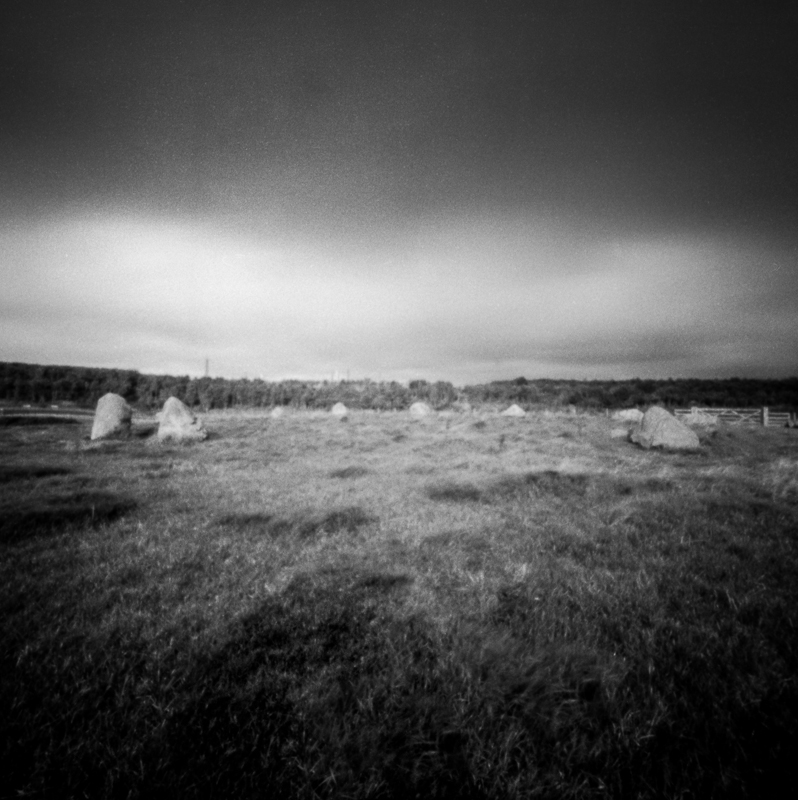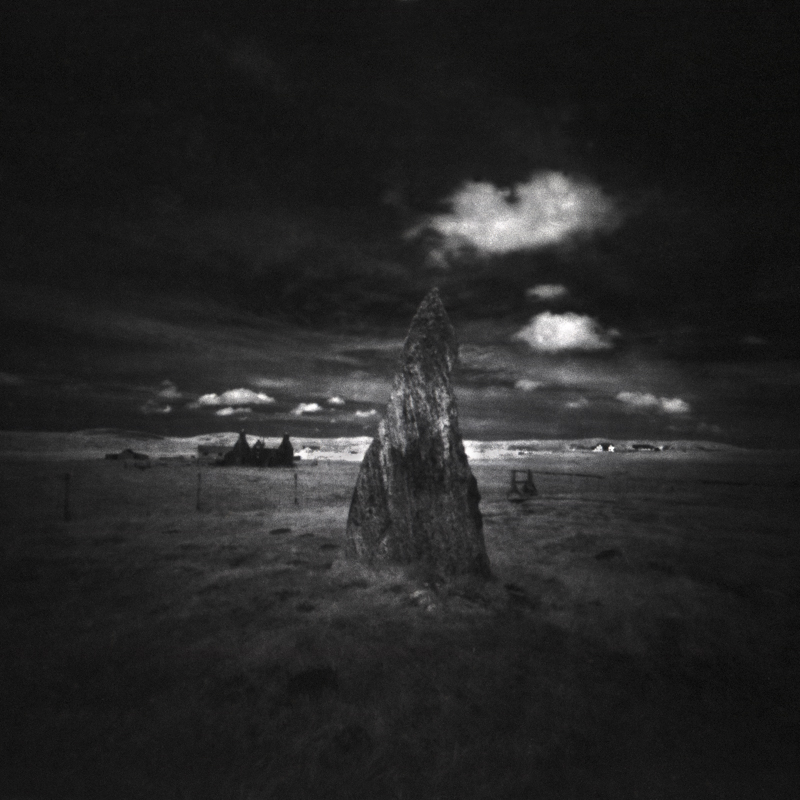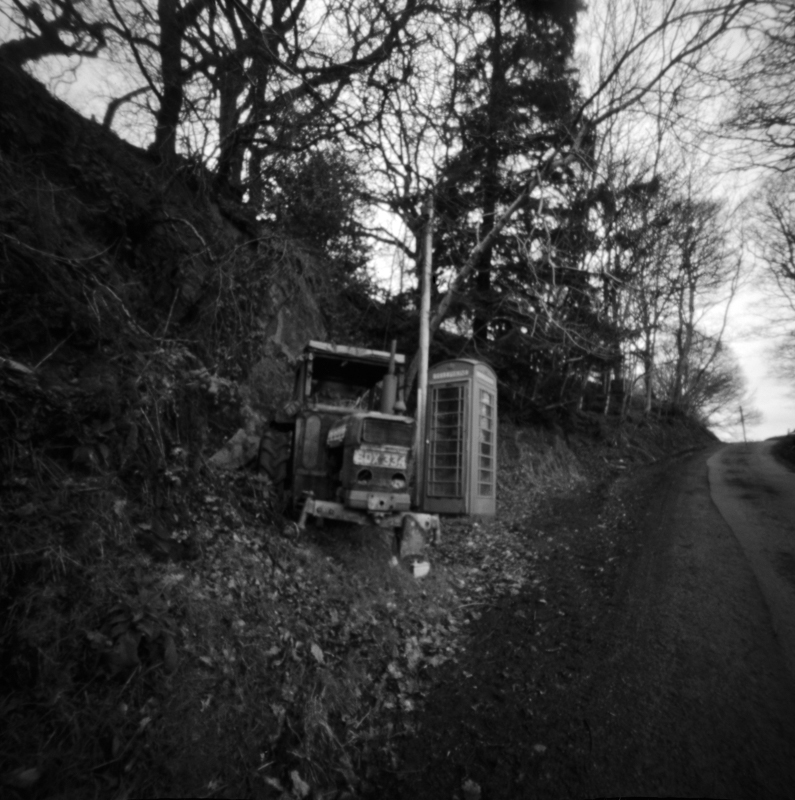Back in November 2016 at the Onlandscape 2016 Conference, I spoke at one of the lunch time “Lightning Talks” about my “Ties to the Land” pinhole photography project. With only 10 minutes and the threat of being shot at (with a Nerf gun I hasten to add) by David Ward, it is suffice to say that I never covered all of the points I wanted to touch on in that short talk.
In effort to right that wrong, here I write about pinhole photography and in particular my “Ties to the Land” pinhole project with some of the stories of the places along the way. If you’re interested in hearing more from me, you can always sign up for occasional updates from myself.
First and foremost photography is my recreation – my – “re-creation”. I don’t have a lot of free time, but when I do, I’m doing photography. Photography and by extension pinhole photography is an opportunity for me to slow down and unwind.
The photographer Paul Hill talks about “being still”, this usually sums up my approach to photography.
What is pinhole photography?
For the uninitiated pinhole photography, as the name suggests, is a box with a tiny hole cut in the front, with photographic paper or film at the back of the camera. The hole was originally cut by piercing a thin sheet of metal with a pin. This led to a ragged vignette around the final image. Now a days, the hole (or aperture) is laser cut through usually a brass metal disk, so the vignette is even all round.
Light comes in through the hole, and is flipped and projected on to the film on the opposite side of the camera. Given the size of the aperture, f/158 in the case of most of my cameras, not a lot of light is coming in, so you need a long exposure and a tripod (plus 1 second) in all but the brightest of conditions.
All of my cameras are made of wood, some from sustainable teak, some from cherry wood and one from oak. All have a lovely tactile feel to them, which in some sort of way (for me at least) makes using them all the more enjoyable. I should also add that you can do pinhole photography with a digital camera. You can buy modified body caps with a brass pinhole fitted that allows you to create similar results.
Reciprocity
The ability of camera film to absorb light/“information” drops off quite rapidly when you are making long expsoures, as a consequence you have to increase your exposure time to compensate. Depending on the advice of the film manufacturer dictates how much extra time you need to add to your the length of your exposure. So 4 seconds could become 12 seconds, 12 becomes 5 mins etc… I’ve taken exposures of 2hrs and 40 mins in length – a lot of coffee was involved. When you need to apply reciprocity varies from film to film – some its after only 2 seconds of exposure, others its as long as 7 minutes (Fuji Provia if you’re asking!)
This was one of my first images that I took on the lovely Zero Image 612B, which is a multiformat pinhole camera – in that it can shoot 6 x 4.5, 6 x 6, 6 x 9 and 6 x 12 on 120 roll film. It still is one of my favourites.
I started to get interested in neolithic structures around the Peak District and started a bit of a project with the goal capturing them…the problem was that they are a bit un-photogenic and they were all rapidly becoming record shots. Shooting such structures with a pinhole camera seemed very fitting and appropriate to me.
This is Gardoms Stone in the Peak District. Its plastic…..the original is buried underneath. When trying to draw out the carvings in the “rock” I splashed it with water in order to increase the contrast.
Robert Macfarlane
At the time I was reading Robert Macfarlane’s excellent “The Old Ways: A journey on Foot”, where he writes about recreating journeys around Britain….. And it got me thinking…
Humans are animals and like all animals we leave tracks as we walk: signs of passage made in snow, sand, mud, grass, dew, earth or moss…. We easily forget that we are track-markers, through, because most of our journeys now occur on asphalt and concrete—and these are substances not easily impressed.”
Robert Macfarlane, The Old Ways: A Journey On Foot
Macfarlane writes about Formby Beach near Liverpool where there are tracks in the mud from hunters, children running and aurochs. The tracks are over 5000 years old. What made the tracks more exciting (to me at least!) was their ephemeral nature, hidden under layers of sand for millennia, to be exposed by the tides, to then ultimately be washed away.
I have to skip about 10 photographs in to the series to show a photograph (below) that I had visualised almost from the start of the project, but it does in many ways encapsulate the project for me.
Ties to the Land photograph #1
Whilst I had been casting around for a project, and I was reading “The Old Ways”, it wasn’t until I was photographing this rope on the beach at Loch Buie on the Isle of Mull that it all “clicked” (so to speak).
The project started with quite metaphorical images, tying the images to the land.
Here a carved foot print used as part of the coronation ceremony of the kings of the ancient Scots kingdom of Dalriada at Dunadd in Kilmartin Glen in Argyll. If you are in to your history or just enjoy exploring, I would thoroughly recommend a visit to Kilmartin Glen, as it is full of standing stones, rock carvings, burial mounds and stone circles. The museum in Kilmartin village is worth a visit.
St Cuthbert’s Way, Holy Island
Continuing the metaphor, and again marking humankind’s mark on the land, where the way markers stitch the land to the sky.
Hodge Close
Things changed – on a trip to the lakes a couple of years ago, the project took a turn and I started to explore man’s literal use of the land instead of searching for metaphors. Quarries and mines became a bit of a theme within the project, as they have so heavily marked our land.
Dinorwic Quarries
The project in many ways had started to chart, in the words of William Wordsworth, “…the still sad music of humanity…”
At one point thousands of men lived and worked up this hill side working the slate from the land in what is quite a hostile environment. Living in barrack accommodation on the hill side returning to the surrounding villages only for rest days.
Quarries are fantastic places to explore and to see a glimpse of how we used to live and how we used the land – with more often than not a devastating impact. It serves as a useful reminder that in most of Great Britain, despite how untouched it may appear, most of the land has been managed at some point. Even today the beautiful romantic landscape of the English Lake District is an actively managed landscape.
Though if you are familiar with Bolehill Woods, near Padley Gorge in the Peak District you’ll also appreciate that nature does start to reclaim the land again after man’s intervention.
Humanity hasn’t only been destructive by removing resources from the environment, humankind has also used its destructive powers for its own enjoyment. One only has to look towards examples of Victorian (and earlier) “pleasure gardens” like on the Chatsworth Estate or at Aira Force by Ullswater in the Lake District. Ironically, “Capability” Brown’s work (terraforming?) on the Chatsworth estate was a response to changing fashions in garden design away from formal gardens and an apparent mood of austerity.
Grey Croft Stone Circle
This is the weakest photograph in the project, because I have to explain to you what it is. It was also a little bit daunting to get to.
This is Grey Croft Stone Circle in the Western Lakes. Its been ploughed up, had its stones dumped at the edge of the field, had the stones put back in place, had a golf course put next to it and the country’s first nuclear power plant built by it too – not forgetting the Windscale incident.
The cooling towers of the power plant, which I really wanted to be in shot, are now gone as the site currently is a reprocessing only location hidden behind a bank of fast growing conifers.
Getting to the site can be “challenging” and you are always feeling a little guilty going here (despite being on a right of way), as the Civil Nuclear Constabulary keep a close watch on you and your vehicle.
Mines, quarrying and power
Linking from power to quarrying and back to power again.
The photograph below left is the pit head marker for Number 2 Upcast Shaft (or Shonkey as it was nicknamed) at Thurcroft Colliery in the South Yorkshire Coalfield, which provided coal for the UK’s power stations. The Number One Downcast Shaft is enclosed in the fenced off area in the middle ground. Thurcroft Colliery was closed in 1992, the land cleared and given over to nature and dirt bikers.
It’s a horrible desolate place, despite the greenery and the new planting that is there
As part of the project I dabbled in infra pinhole photography, which takes the hanging around and waiting for your shot to expose to the next level (if you’re a masochist) . With an infrared filter attached to the front my pinhole camera (with rubber bands), for light meter reading purposes the film had to be rated at ISO 3 or 6 depending on the film being used. I first started using the wonderful Efke Aura, but after a production line failure where it was too expensive to restart production I switched to Rollie IR 400, which isn’t as soft in appearance and but it does provide (as you can see) quite a stark black and white image.
Its ironic that about 5 minutes away by car on the other side of the M1 from Thurcroft Colliery is Penny Hill Wind Farm (below right).
I think they look quite beautiful from a distance, but the noise when you’re next to one is terrible and dispels any illusion of beauty.
Up on Big Moor
Humanity of course does have other ways of altering the land
US Army mortar impact from WW2 up on the moors behind my home city of Sheffield – I was drawn to the star shaped pattern radiating out from the crater. The actual target was the out crop in the background, which is peppered with pock marks, I suspect the person who fired this round was buying the beers that night.
This photograph perhaps illustrates how close you have to get to your subject thanks to the wide angle of most pinhole camera – the camera was set up low and about a foot away from the crater. To give a sense of scale, the outcrop in the background is 20 yards away and probably about 20 feet high.
There is always an element of crossing your fingers and hoping for the best when composing your shots when using a pinhole camera, as there is no viewfinder. Some cameras do have sighting guide marks etched in to the wood. I prefer to guess and hope for the best – or is that use my skill and judgement? ;). In many ways a pinhole camera is a bit like a claymore mine (they have embossed on the front of them “Front Towards Enemy”), if you point it in the right direction, you’ll probably get what you wanted in your shot.
If you’re not going to send your film away for processing, then you do it yourself (as I do). Unfortunately, I’m not very good at looking after my chemicals (sloppy even?). As this Infra Red pinhole photograph of Callanish II stone circle demonstrates that I didn’t look after my fixer soluntion. That all said, the effect is rather pleasing.
I’ve visited this spot a number of times now. The house, in the background, until recently had a roof and a 1st floor and was being refitted. It transpires that a few weeks before this shot that the owner had a change of mind and decided to gut it – so he set fire to it…
My penultimate photograph to me demonstrates that whilst photography (wife and kids to one side) means a lot to me, it doesn’t to a lot of other people. I was stopped by the owner of this tractor up a valley in North Wales and he spent a long time quizzing me (quite intensely (but in a friendly way)) on just what it was about his tractor that made so many people stop to take photographs of it.
I didn’t really have an answer for him….
I’ll end with this pinhole photograph – possibly my favourite to date and example of how good fortune has a large part to play in any photography.
I didn’t see the horse when I approached the cottage, but then I walked around the corner and straight in to it. The horse did follow me around for a bit and then finally wandered off having got bored. That said it did manage to keep still for 6 seconds whilst I took the shot.
This is abandoned croft near Staffin on the Isle of Skye with the famous Quraing in the background. The cottage with curtains drawn as if someone has gone away for the day, with ornaments on the window sill. The ironing board still out and throws over the sofa. The land (the croft) given over to rushes and grass.
With young people going to the mainland for employment and education, when relatives die and pass their lands on, the thought of returning to work the land in what can be a harsh and wet environment is not always an attractive one. Instead the properties and land were left to become derelict and over grown. The islands of Scotland are littered with these abandoned crofts, testament to the continuing depopulation of the land and the pull of cities for wealth and jobs.
I think for the moment, at least, I have done to death my Ties to the Land pinhole photography project. I don’t have the same fire and enthusiasm to get out there and make/take photographs with my pinhole camera just now. I’ve covered some of those reasons here. It is disappointing and I am disappointed with myself, that something that did give me so pleasure has quite suddenly (and hopefully for the moment only) stopped being of any strong interest to me.
If you’re interested in finding out more about pinhole photography and seeing the work of other pinhole photographers that are out there, here is a short list of those that could be worth having a look at:
- Alex Yates – https://www.alexyates-photography.com/ and http://pinholista.com/
- Andrew Atkinson – http://andrewatkinson.co.uk/
- Paul Mitchell – http://www.paulmitchellphotography.co.uk/pinhole/
- Steve Gosling – http://www.stevegoslingphotography.co.uk/
- Todd Schlemmer (he also creates 3D printable pinhole cameras!) – https://www.flickr.com/photos/theschlem/albums
- Christopher Hight – http://www.christophermhightphotography.co.uk/
There are of course tonnes of other pinhole photographers out there, so if you’re one of them and you’re reading this, please don’t be offended if you’re not on this pinhole photography list. 🙂
And finally…
There are lots of other photographs that didn’t make the presentation mainly because of time constraints and the fact that I wanted to trying and talk about each photograph and not just subject the audience to death by Powerpoint with an endless stream of photographs with no commentary.
So here is a small selection of other pinhole photographs, some from the project some not.
If you have any comments, please feel free to comment below – many thanks 🙂







